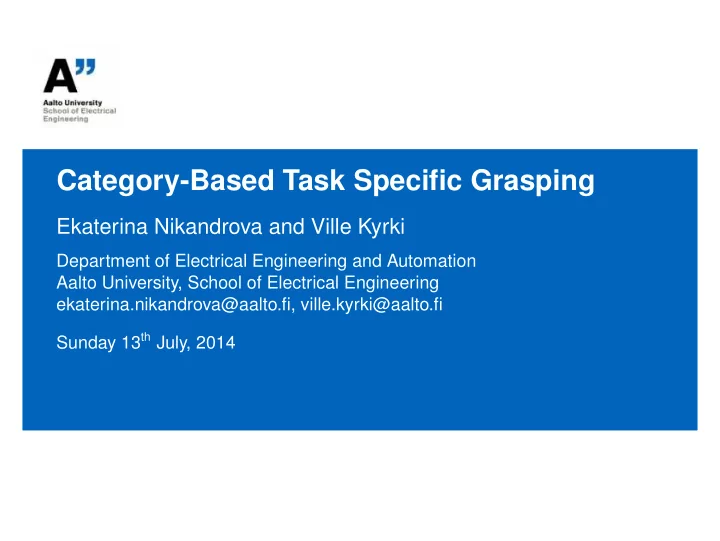

Category-Based Task Specific Grasping Ekaterina Nikandrova and Ville Kyrki Department of Electrical Engineering and Automation Aalto University, School of Electrical Engineering ekaterina.nikandrova@aalto.fi, ville.kyrki@aalto.fi Sunday 13 th July, 2014
Our approach Probabilistic approach for task-specific stable grasping of objects with shape variations inside the category. ◮ Belongs to the category of grasp synthesis by comparison methods. ◮ Does not require a construction of the large training dataset. ◮ Does not require full 3D models for new objects ◮ Accounts for all training objects in the category during optimization, which assures better generalization. RSS 2014 Workshop on Information-based Grasp and Manipulation Planning Tuesday 1 st July, 2014 2/4
General framework Figure: General framework ◮ Model grasps are generated in simulator. ◮ Partial point cloud from a single RGB-D image is used in registration. ◮ Task-specific grasps are represented by weighted density functions. ◮ Numerical optimization is performed. RSS 2014 Workshop on Information-based Grasp and Manipulation Planning Tuesday 1 st July, 2014 3/4
Experimental results Figure: Columbia Grasp Database mugs models ◮ Training and testing models are from Columbia Grasp Database (categories “mugs" and “tools"). ◮ The method outperforms the classical approach based on applying the grasp of the most similar object in a database. ◮ The method can generalize for the objects of other subcategories, which share shape similarities with the class in the training set. ◮ The approach is currently being validated on a KUKA LBR4+ with a Barrett Hand. RSS 2014 Workshop on Information-based Grasp and Manipulation Planning Tuesday 1 st July, 2014 4/4
Recommend
More recommend